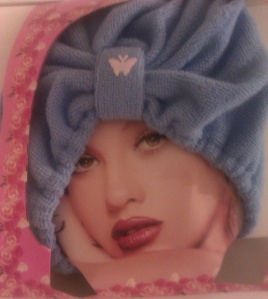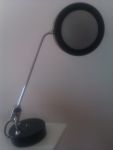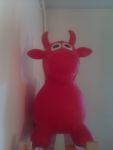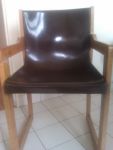 We can at least distinguish four species, and several sub-species of buyers. I’ll focus on the four main species: the common buyer, the nostalgic buyer, the expert buyer and the creative buyer. Although there are some individuals that exemplify all and only traits of their species, most of them display traits of different species and can shift from one to the other, even on the same visit. Different types of buyers can like the same item for different reasons, which implies that there are some objects that appeal to all categories. These should turn out to be the top-sellers at flea markets if my little theory is correct. A seller at a flea market will be much more successful if (s)he knows these categories of buyers and adapts his or her sales pitch.
We can at least distinguish four species, and several sub-species of buyers. I’ll focus on the four main species: the common buyer, the nostalgic buyer, the expert buyer and the creative buyer. Although there are some individuals that exemplify all and only traits of their species, most of them display traits of different species and can shift from one to the other, even on the same visit. Different types of buyers can like the same item for different reasons, which implies that there are some objects that appeal to all categories. These should turn out to be the top-sellers at flea markets if my little theory is correct. A seller at a flea market will be much more successful if (s)he knows these categories of buyers and adapts his or her sales pitch.
Different species of buyers are naturally attracted to items of different kinds. As for characterizing items, there seem to be three main characteristics: age, originality, usefulness. We could ad beauty here, but this would get us right away into hell’s kitchen. But let’s say that the beauty (or aesthetic value) is mainly a value for the creative buyer and that for a decorative item, beauty will be part of what makes it useful.
Usefulness and originality are both relative (as is age, but to a much lesser degree). As for now, originality of an item can be defined in terms of the probability of finding a similar or identical object at the same or another flee-market. Originality is thus gradual.
To keep it simple, I define usefulness in terms of frequency of use once acquired. This definition has the virtue of relying on facts rather than value. But it cannot account for some objects that we would call tremendously useful in common speech, like a suction cup used in cleaning sinks, but that we don’t use frequently. Frequency of use is relative (to other objects) and objective, even though the decision for buying an item or not really depends on expected usefulness, which is subjective. This concept is tightly linked to the common buyer.
The common buyer just looks for a simple object to be used like another object of the same kind which (s)he could buy in a store, and the main value of getting it at a flea market will be that it’s cheaper than at the store. The common buyer will likely prefer an item that seems better suited to execute the task (s)he buys it for. Everything else being equal, (s)he will usually prefer a newer item.
There are some sellers who specialize on this species or aspect of buyer personalities. They sell cheap, out-of-the-factory items for everyday use, like toothbrushes, spoons, nails, clothing, etc.
The nostalgic as well as the creative buyers tend to ignore these sellers or even despise them (they usually also tend to display a very different habitus). The behavior of the nostalgic and the creative buyers are similar and they are often interested in the same items, but, again, for different reasons.
The nostalgic buyer can be either a collector or else a romantic. This definition is sketchy, because the nostalgic buyer is just as complex as nostalgia. (S)he finds those items most interesting which remind him or her of a preferred period of time. (S)he will thus be buy those (old) items which represent her favored period.
The expert buyer isn’t emotionally implicated in buying. (S)he buys the items whose price doesn’t reflect their market value. (S)he will either keep them and wait that their price further raises or resell them soon at another place, where (s)he gets the market value for it. (S)he is really a trader at the flea market who buys an object because (s)he thinks that it’s a good deal.
There are now specific high-brow flea markets, like Les Puces du Design in Paris, where expert buyers resell items they got at standard flea markets, often for triple the price they bought them for. People who buy there usually have more money and are willing to pay the premium for someone else having done the sorting at a more standard flea market, where most objects are without interest, and only few actually have high market and aesthetic values.
In many cases, the nostalgic buyer will be ashamed of his or her nostalgia and will pretend to buy for the same reason the expert buyer buys, especially when questioned about a specific item which appealed to him or her because of personal fancy. However, (s)he will only rarely resell an item and the people in his or her environment will end up understanding that (s)he really buys for emotional rather than commercial reasons. If they are nice, they’ll let them go on pretending that they are actually expert buyers.
The creative buyer is probably the most intriguing and complex species. A creative buyer can buy things that nearly nobody else even finds worth looking at. And (s)he’ll be all the happier if they don’t. What makes him or her feel good is that they see something nobody else does. The creative buyer will pull a half hidden item from below a heap of stuff and shout out: “This is fantastic!” or scroll through hundreds of pictures because there might be one (s)he likes.
There are at least two subspecies: the Do-It-Yourself (DIY) and the artist.
The DIY likes to restore items, (s)he like the smell of glue, the sound of drilling, and the feeling of polished wood. (S)he will be happy to acquire an item, simply because (s)he likes to restore it, erasing the traces of its use, and making it look fresh. If (s)he is on the internet, (s)he’ll probably love etsy. (S)he doesn’t necessarily like the old to have the patina of the old. (S)he buys an object because of the potential (s)he sees in it.
The artist likes to feel that (s)he sees something in the item that most other people don’t see. (S)he might for example buy an old projector in cheap plastic that runs with old batteries or a host of family photos. It might neither be cheap, nor useful nor remind him or her of a favorite moment in history. It’s just that “(s)he somehow likes it”, finds it “weird” or original or that (s)he thinks: I might use this for a project some day (either as a ready-made or else to integrate it into a work). For him or her, buying an object is like for an artist to make a ready-made in the most basic sense: she or he declares it to have value – even if their museum is just their apartment. To make things clear: (S)he doesn’t actually have to make a living on being an artist. (S)he may “only” be an artist in his or her way of looking at the world of things. (S)he will take things made for one purpose and assign them another.(S)he buys an object because of what she (s)he sees into it.
Here are a couple of things I bought at the flea market. I let you figure out for yourself who in me bought each of these items. Would be happy if you shared some thoughts (and pictures) of your favourite flea market acquisitions.








i loved this. i started laughing at the embarrassment of the nostalgic buyer and didn’t stop. you could apply this to so many different areas of life. art in general, dancing, singing, why we make any deliberate choice. it’s practical or it’s going to benefit us financially, or better yet the secret reason we all have for doing something against the grain as an individual. only one typo with the word “add” in the beginning.
Hello! I was wondering if we could use your theory for a paper we have at school. Would you by any chance have a name for this?
Hello Xin! What do you mean by “this”? The theory? Klaus